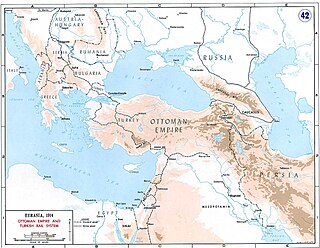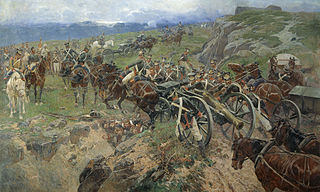 W
WThe military history of Azerbaijan comprises thousands of years of armed actions in the territory encompassing modern Azerbaijan, as well as interventions by the Azerbaijani Armed Forces in conflicts abroad. The Azerbaijanis are believed to be inheritors of various ancient civilizations and peoples including the indigenous Caucasian Albanians, Iranian tribes such as Scythians and Alans, and Oghuz Turks among others.
 W
WAzerbaijan, officially by its full name – the Azerbaijan Soviet Socialist Republic, entered World War II alongside the Soviet Union, after the German declaration of war on June 22, 1941. Azerbaijan's oilfields were enticing to the Germans due to the USSR's heavy dependency on Caucasus oil – setting the scene for German campaigns attempting to capture and seize the oilfields in Baku during the Battle of the Caucasus. Azerbaijan’s oil was very decisive for Soviet victory. More than 600,000 people from Azerbaijan were conscripted to the Workers’ and Peasants’ Red Army during World War II from 1941 to 1945.
 W
WEstablished in December 1917, Dunsterforce was an Allied military force named after its commander, General Lionel Dunsterville. The force had fewer than 350 Australian, New Zealand, British and Canadian officers and NCOs, who were drawn from the Western and Mesopotamian fronts. The force was intended to organise local units in northern Iran (Persia) and southern Caucasus, to replace the Tsarist armies that had fought the Ottoman armies in Armenia. The Russians had also occupied northern Iran in co-operation with the British occupation of south Iran, to create a cordon to prevent German and Ottoman agents from reaching central Asia, Afghanistan and India.
 W
WGabala Radar Station was a Daryal-type bistatic Passive electronically scanned array early warning radar, built by the Soviet Union in the Qabala district of the Azerbaijan SSR in 1985. It was operated by the Russian Aerospace Defence Forces and closed at the end of 2012. The radar station had a range of up to 6,000 kilometres (3,728 mi), and was designed to detect missile launches as far as the Indian Ocean. The radar's surveillance covered Iran, Turkey, India, Iraq and the entire Middle East. It could detect the launch of missiles and track the whole trajectory to enable a ballistic missile defense system to intercept an offensive strike. The Radar Station hosted about 1,000 Russian servicemen with about 500 Azerbaijanis.
 W
WThe Nagorno-Karabakh conflict is an ethnic and territorial conflict between Armenia and Azerbaijan over the disputed region of Nagorno-Karabakh, inhabited mostly by ethnic Armenians, and seven surrounding districts, inhabited mostly by Azerbaijanis until their expulsion during the Nagorno-Karabakh War, which are de facto controlled by the self-declared Republic of Artsakh, but are internationally recognized as de jure part of Azerbaijan. The conflict has its origins in the early 20th century, though the present conflict began in 1988, when the Karabakh Armenians demanded that Karabakh be transferred from Soviet Azerbaijan to Soviet Armenia. The conflict escalated into a full-scale war in the early 1990s.
 W
WThe Provisional Military Dictatorship of Mughan was a British-controlled anti-communist short-lived state founded in the Lankaran region on August 1, 1918. The Mughan government did not support independence of Azerbaijan and it was led by white Russian colonel T. P. Sukhorukov who acted under the protection of the British occupation of Baku. Mughan declared to be an autonomous part of "single and indivisible Russia." On December 1918, it was reorganized as Mughan Territorial Administration. On April 25, 1919, a violent protest organized by Talysh workers of pro-Bolshevik orientation exploded in Lankaran and deposed the Mughan Territorial Administration. On May 15, the Extraordinary Congress of the "Councils of Workers' and Peasants' Deputies" of Lankaran district proclaimed the Mughan Soviet Republic.
 W
WThe 1804–1813 Russo-Persian War was one of the many wars between the Persian Empire and Imperial Russia, and began like many of their wars as a territorial dispute. The new Persian king, Fath Ali Shah Qajar, wanted to consolidate the northernmost reaches of his kingdom—modern-day Georgia—which had been annexed by Tsar Paul I several years after the Russo-Persian War of 1796. Like his Persian counterpart, the Tsar Alexander I was also new to the throne and equally determined to control the disputed territories.